Cayman: Full steam ahead for new waste system & new name unveiled
From CIG and Dart
Contract for public-private partnership with Dart-led consortium signed; new name for facilities unveiled


26 March 2021, Grand Cayman: Today, the Cayman Islands Government signed a 25-year contract with Dart to design, build, finance, maintain and operate a new integrated solid waste management system, and complete the ongoing remediation of the George Town Landfill.
The signing concludes more than three years of collaboration prior to the Environmental Impact Assessment (EIA), permitting and construction of the project facilities, which will take approximately three years. The new facilities will be located immediately south of the existing landfill.
Premier Alden McLaughlin called the contract signing a landmark achievement.
“This signing represents a historic achievement for the Cayman Islands and the final step towards the delivery of a modern, twenty-first century solid waste solution that will have tremendous benefits for the environment, our community, and future sustainable growth,†he said. “Following the Government’s National Solid Waste Strategy, these new facilities have the capacity to divert up to 95% of waste from being landfilled in the future and contribute 8.5 Megawatts of renewable energy to the grid.â€


Hon. Dwayne Seymour, Minister for Health, Environment, Culture & Housing, said the new facilities are essential to safeguard the country’s public and environmental health for current and future generations.
“The remediation of the George Town Landfill and the development of the new energy recovery and recycling facilities will transform the way we deal with waste in the Cayman Islands for the next 25 years and beyond,†he said. “The one thing that will not change is that there will be no direct disposal fees to the public or commercial operators at this time.â€
“Even as Dart and the Government celebrate this significant milestone, we are looking ahead to the next three years of delivering world-class infrastructure to the people of the Cayman Islands,†he says. “This partnership marks a new chapter in the sustainable development of the country. Under the new system, recycling performance will be improved, and our garbage will become a resource for generating electricity rather than a waste.â€
New name unveiled: ReGen
Now named ReGen: Cayman’s Energy & Recycling Centre, the project facilities include:
- Energy recovery facility
- Bottom ash processing facility
- Construction and demolition waste facility
- End-of-life vehicle and scrap metal processing facility
- Residual waste landfill
- Household waste recycling centre
- Materials recovery facility
- Green waste facility
- Medical waste facility
These integrated components which will work together to deliver sustainable waste management, promote the international waste hierarchy (reduce, reuse, recycle, recover, dispose) and divert the majority of our waste from being landfilled.
The Department of Environmental Health (DEH) will continue to manage waste and recycling collection, and operate the materials recovery, household recycling, green waste processing and medical waste facilities, retaining existing local jobs.
DEH will retain responsibility for waste management in the Sister Islands, including transportation of waste from Cayman Brac and Little Cayman to ReGen for treatment.
What to Expect: 2021
Over the course of 2021, remediation of the main mound at the George Town Landfill will continue, with interim tipping operations transitioned to a new area of the landfill. The visual appearance of the site will also be enhanced with privacy screens.
The EIA for the project will commence with the publishing of the Terms of Reference which will soon be available for public consultation.
As the policy, strategy and outline business case for the integrated solid waste management system went through a period of public consultation before receiving final government approval, the EIA will focus on the potential impacts of the facilities and is expected to take approximately a year to complete.
What to Expect: 2022 to 2024
Between 2022 to 2024, the new facilities will be constructed.
Until the energy recovery facility is complete, waste will continue to be landfilled and remediation of the north mound will be completed. As yesterday’s events demonstrated, some risk of fire will remain where there is ongoing tipping or removal of the legacy waste stockpiles. It remains important for the public to properly dispose of potentially hazardous waste such as batteries or other e-waste.
The energy recovery facility will be constructed and operated to the European Union Industrial Emissions Directive, which is considered the highest global standard. Once the energy recovery facility is operational, environmental monitoring will include rigorous air quality testing to ensure compliance with these emissions standards.
Energy recovery facilities produce significantly less emissions than those of on-the-road vehicles or fossil fuel electricity generators.
What to Expect: 2024 and Beyond
Once remediation of the George Town Landfill is complete, it will still take several years for the site to stabilise sufficiently for limited public use. The grassy hill may one day feature a public viewing area.
Remediation will deliver a number of environmental benefits to the community, including:
· Transforming the visual appearance of the current landfill.
· Reducing landfill gas emissions, including cutting greenhouse gas emissions by more than 23,000 tonnes a year; equivalent to removing more than 5,000 cars from our roads every year.
· Eliminating nuisance odours from the current landfill.
· Minimising groundwater and surface water contamination
· Prevent pests from accessing the decomposing waste.
A detailed risk-based assessment and remediation plan has been developed to ensure the remediated George Town Landfill will be a safe neighbour to surrounding homes and businesses going forward.
###
Frequently Asked Questions
Q: What is ReGen?
A: ReGen is the name for new the energy recovery and recycling facilities that form the Cayman Islands Government’s Integrated Solid Waste Management System designed to deliver sustainable waste management, promote the international waste hierarchy (reduce, reuse, recycle, recover, dispose) and divert the majority of our waste from being landfilled.
Q: What’s being built and where?
A: ReGen includes a series of waste management facilities capable of processing many different materials including recyclables, as well as a state-of-the-art energy recovery facility that will turn things that aren’t recycled into energy to power our homes and businesses. The ReGen infrastructure will be located in George Town, immediately south of the existing landfill. However, the planned residual waste landfill will be located within the footprint of the existing landfill.
When complete, ReGen’s integrated components will work together to reduce the amount of waste being landfilled:
- Energy recovery facility
- Bottom ash processing facility
- Construction and demolition waste facility
- End-of-life vehicle and scrap metal processing facility
- Residual waste landfill
- Household waste recycling centre
- Materials recovery facility
- Green waste facility
- Medical waste facility
Q: Is it safe to live and work near an energy recovery facility?
A: Energy recovery facilities are often located in city centres, close to the communities they serve. Examples can be found in London, Paris, Cophenhagen and Mallorca. ReGen will be built to the same standards as these facilities that are permitted to operate within densely populated areas.
The energy recovery facility will be constructed and operated to the European Union Industrial Emissions Directive, which is considered the highest global standard.
Q: What does remediation entail?
A: Remediation of the George Town landfill includes capping and covering the mound of waste, planting grasses and other plants, managing the landfill gas generated within the waste, controlling storm water run-off, and environmental monitoring of air, surface and groundwater quality.
Q: Will remediation reduce the risk of fires?
A: When remediation is complete, it will significantly reduce the risk of fires.
Some risk of ignition will remain where there are ongoing tipping operations or legacy waste stockpiles. The public is asked to continue to be vigilant in separating electronics and batteries from general waste and recycling these materials at the appropriate collection depots. For more information on how to recycle batteries and electronics, please visit the DEH website here.
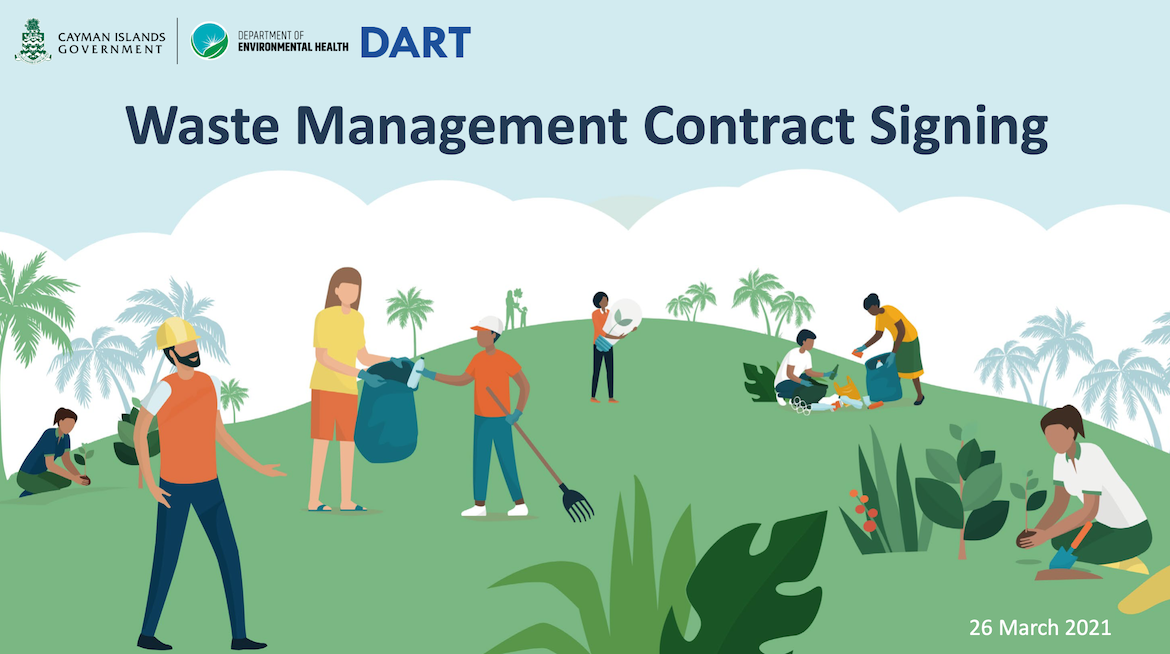
What is the project?
A partnership to transform waste management in the Cayman Islands:
- Cayman Islands Government and Dart in country’s first public-private partnership
- Dart to design, build, finance and maintain new waste infrastructure beside the George Town Landfill
- Operations will be split between Dart and DEH
- Remediation of existing landfill
Waste Management Project Development
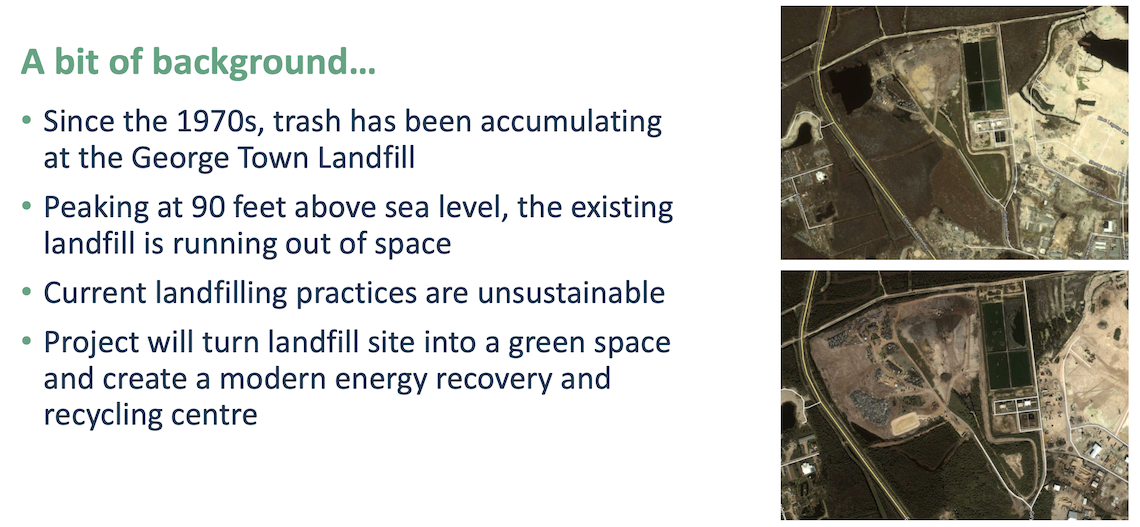

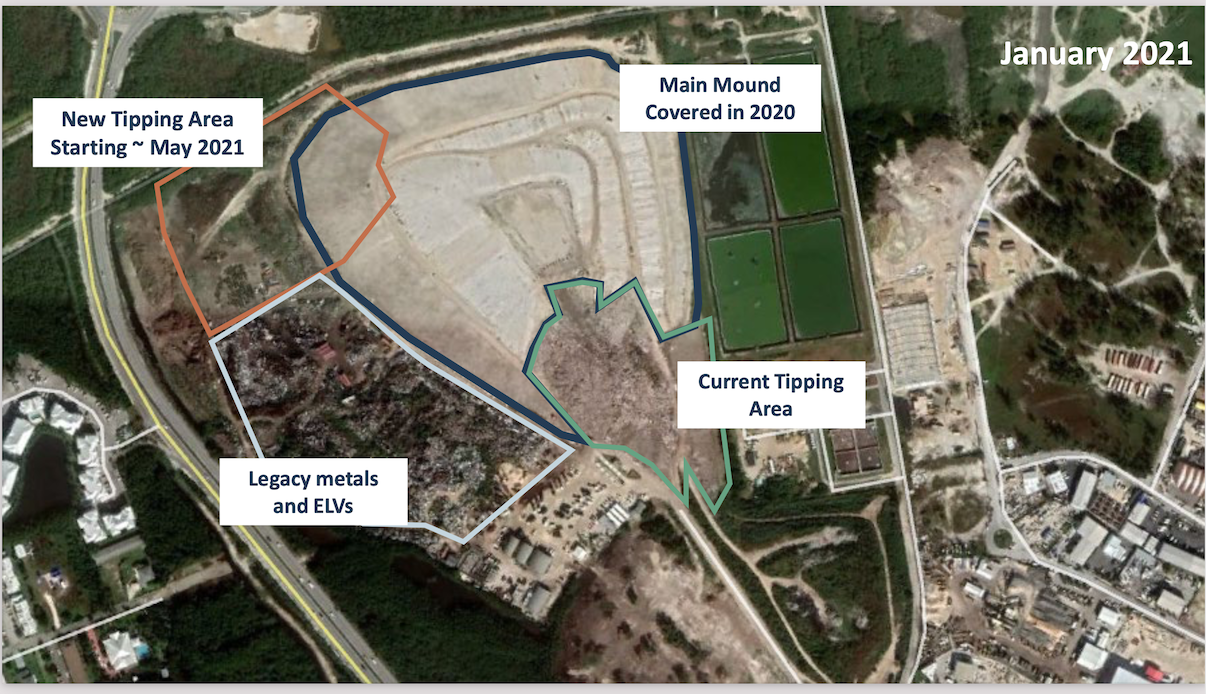

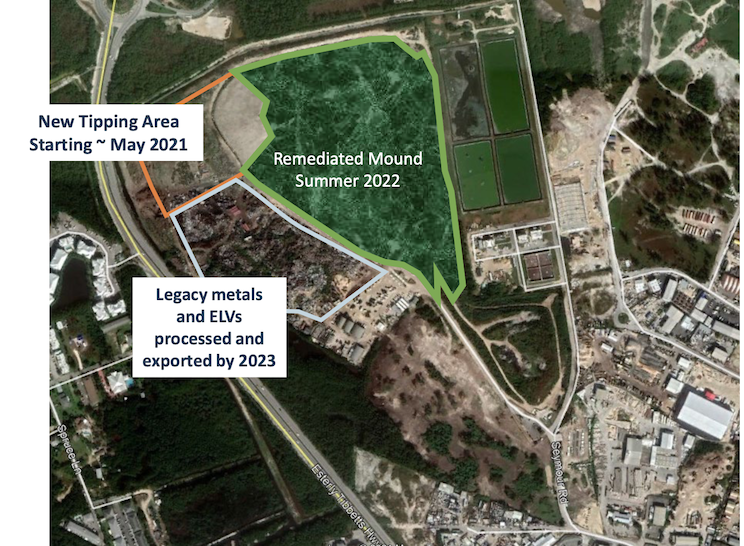

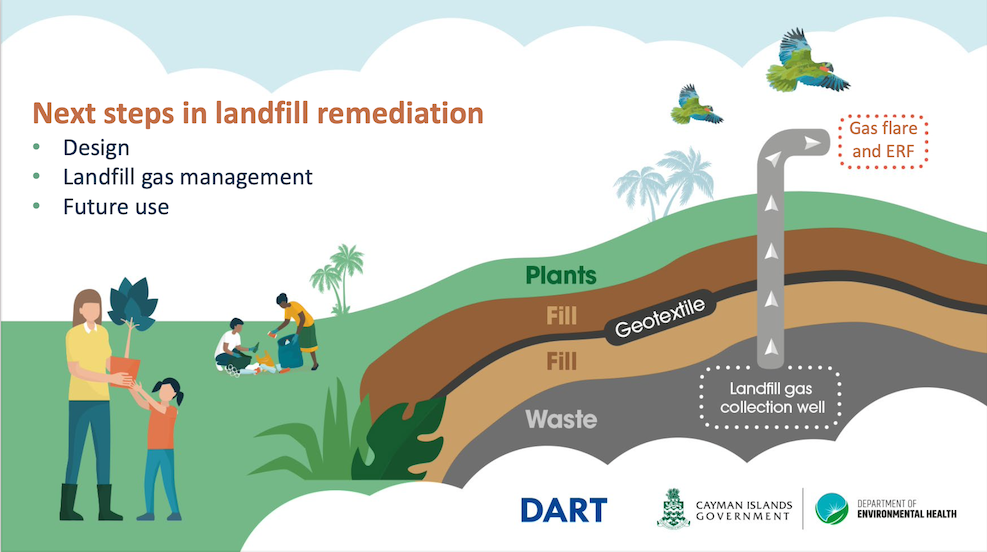

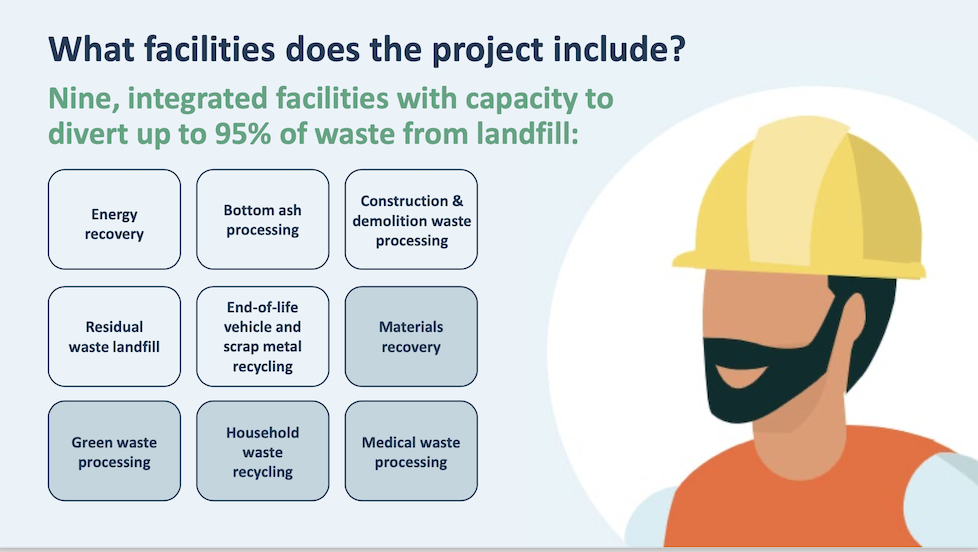

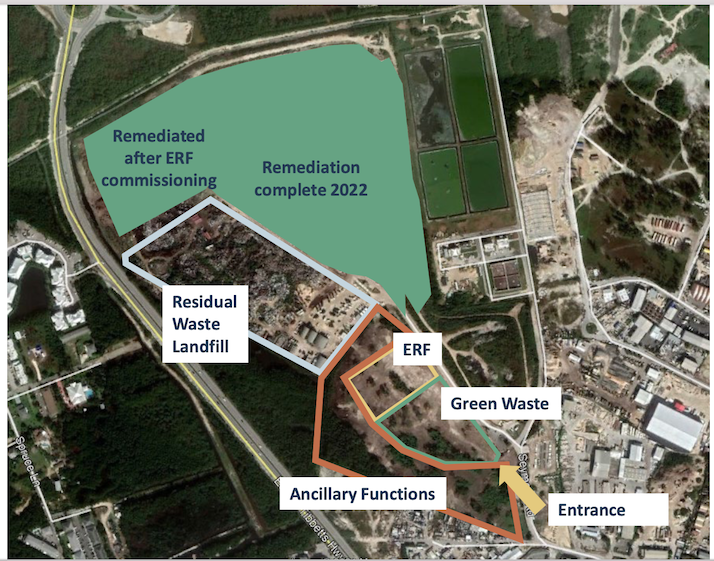

From waste to Watts
Energy recovery or waste to energy facility:
- Turning trash into electricity
- Built and operated to EU Industrial EmissionsDirective, considered the highest global standard
- Capacity to generate 8.5MW renewable energy to the grid, powering more than 2,000 homes
- Long-term and sustainable, minimising the need for a landfill
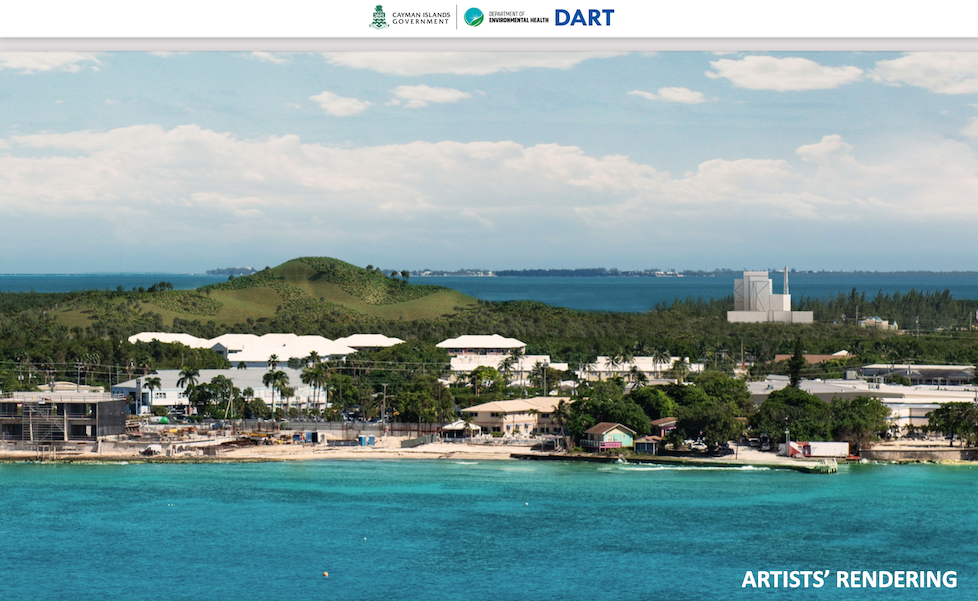

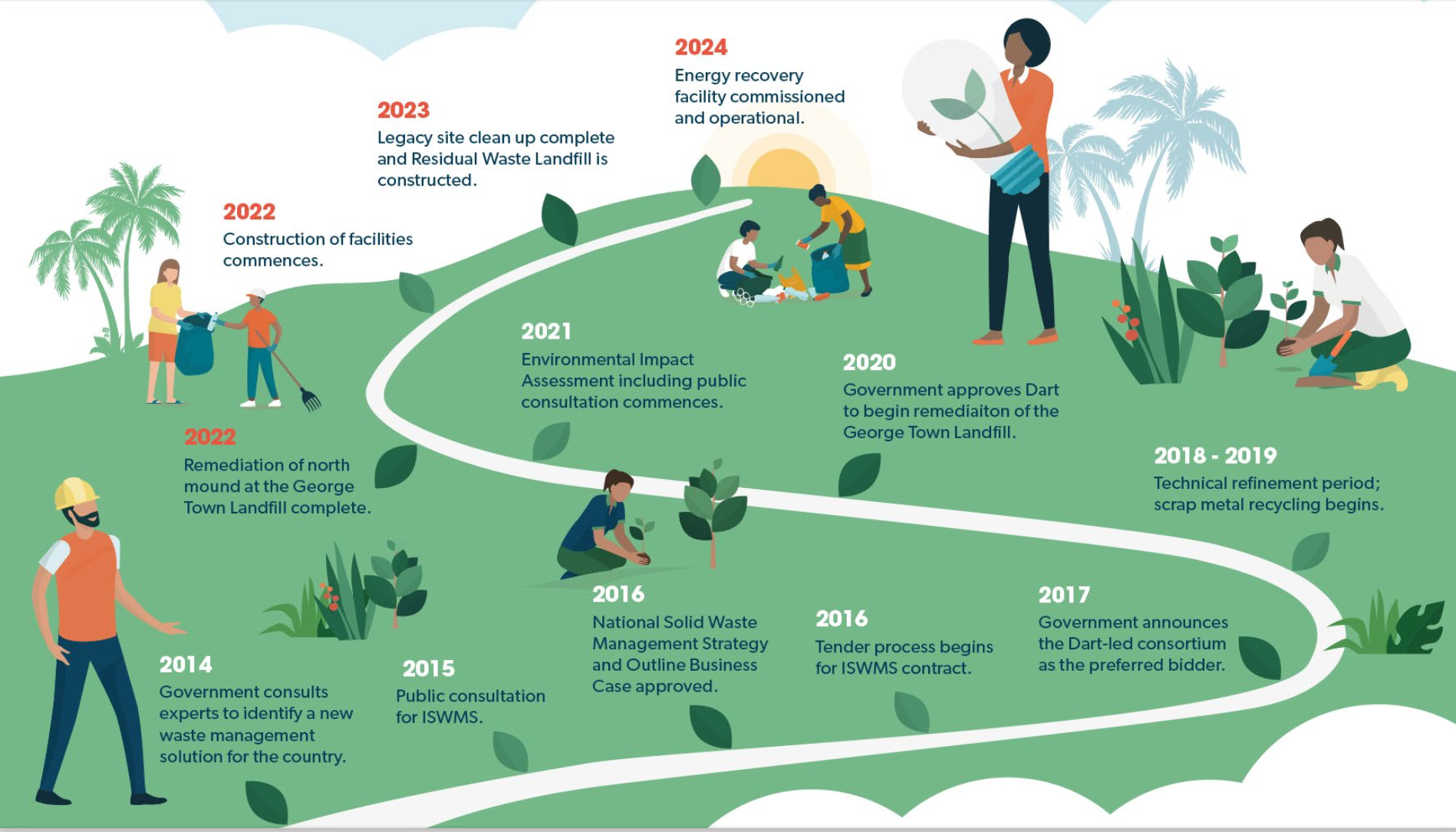

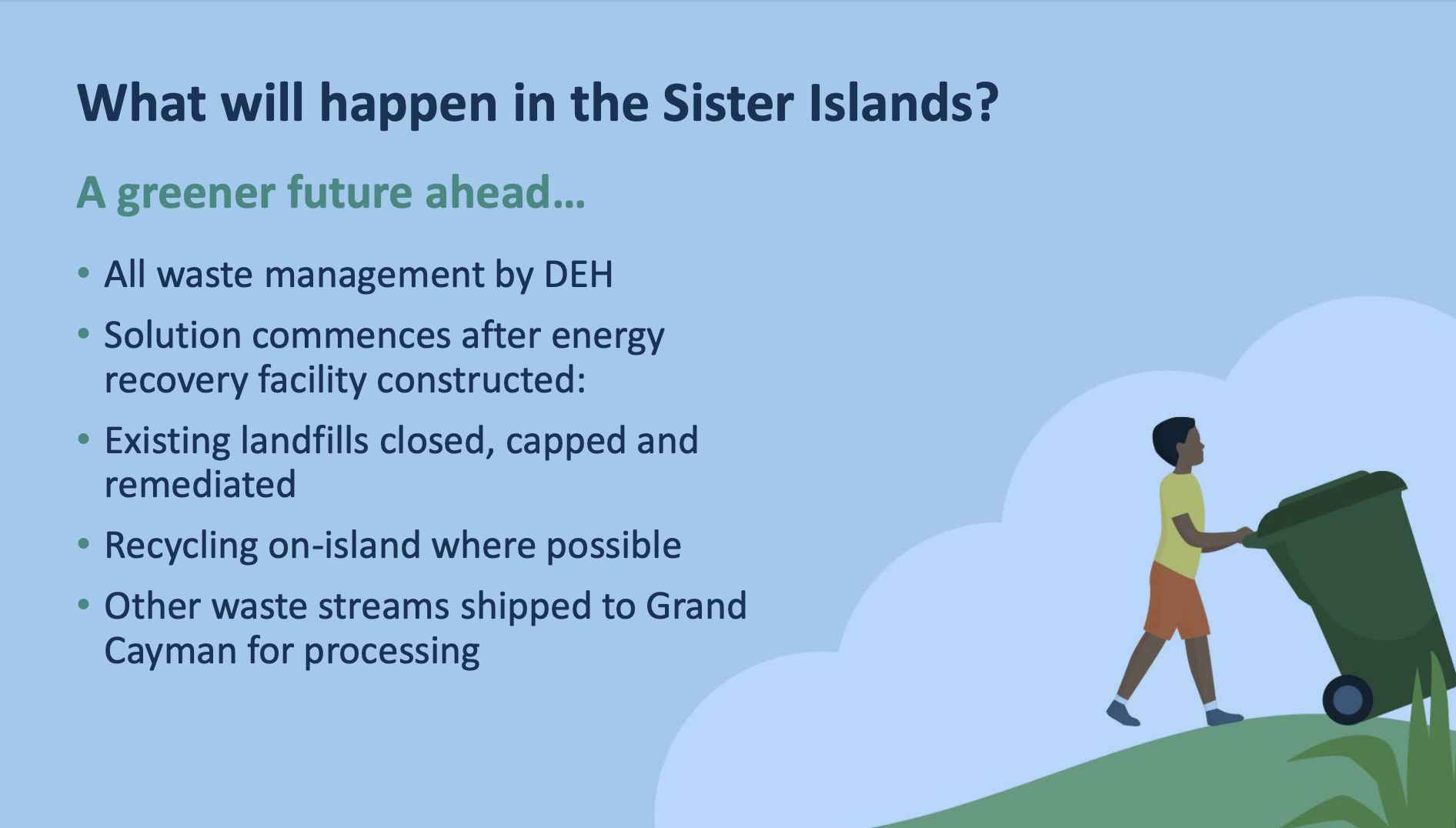

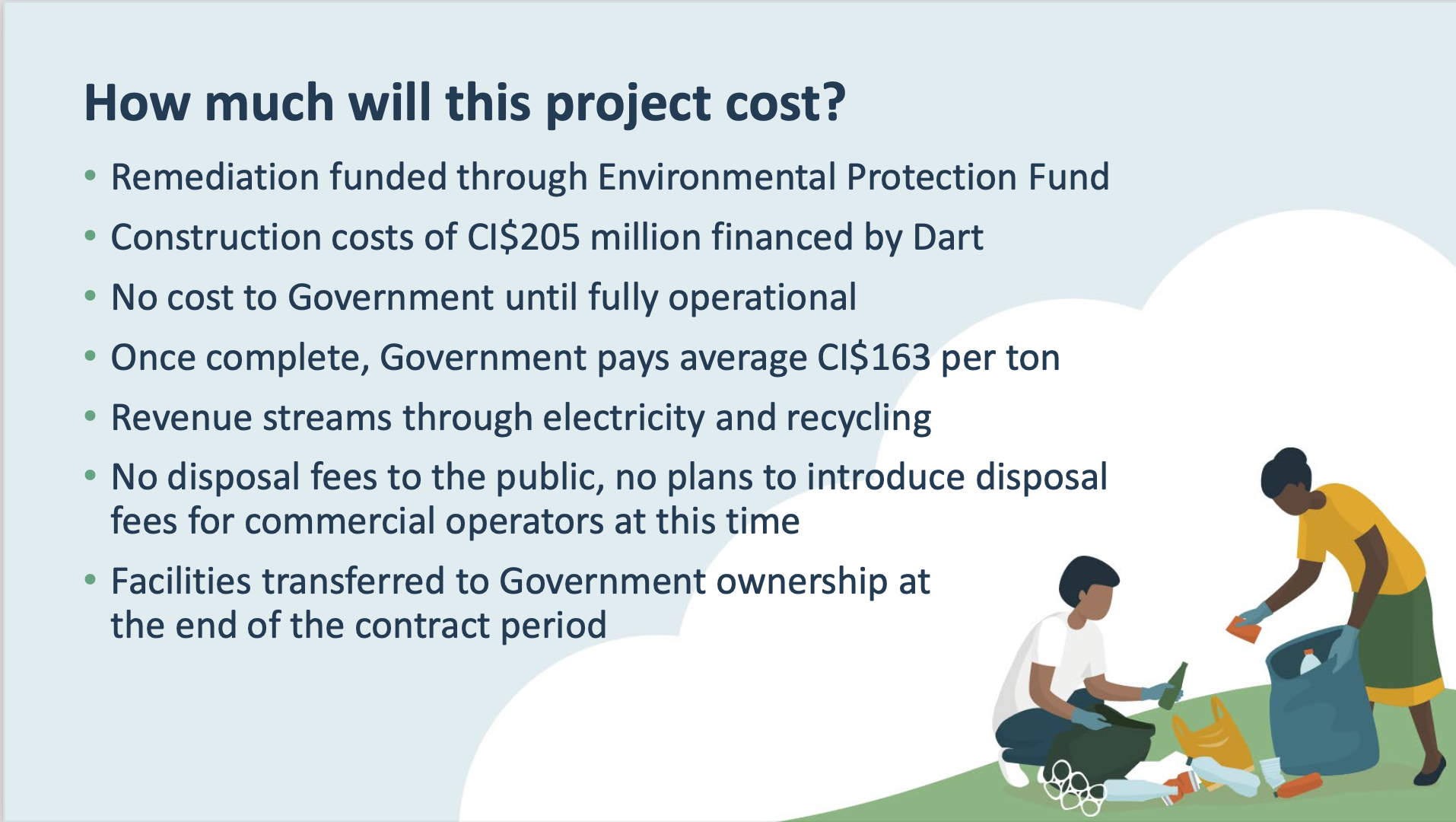

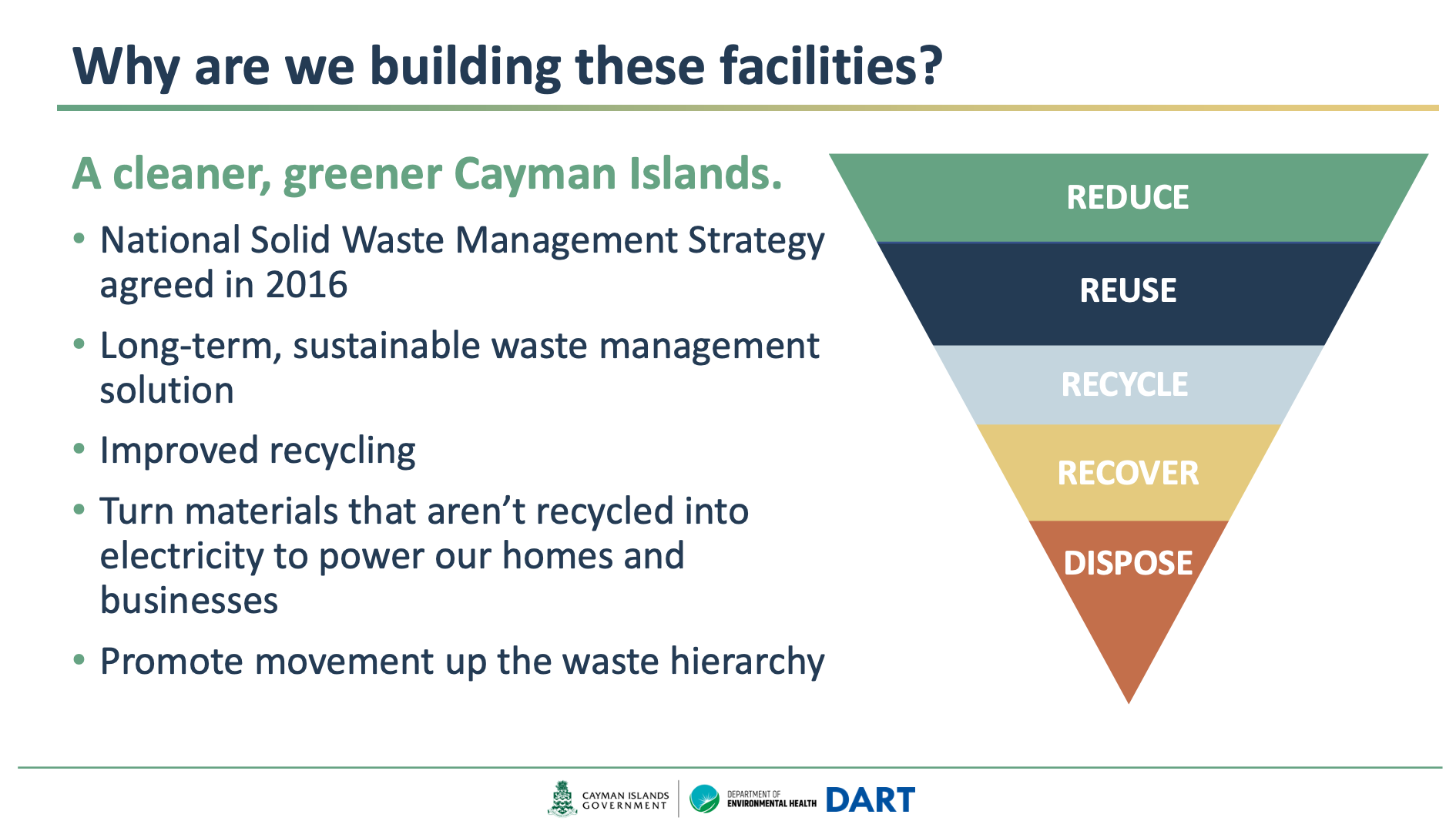

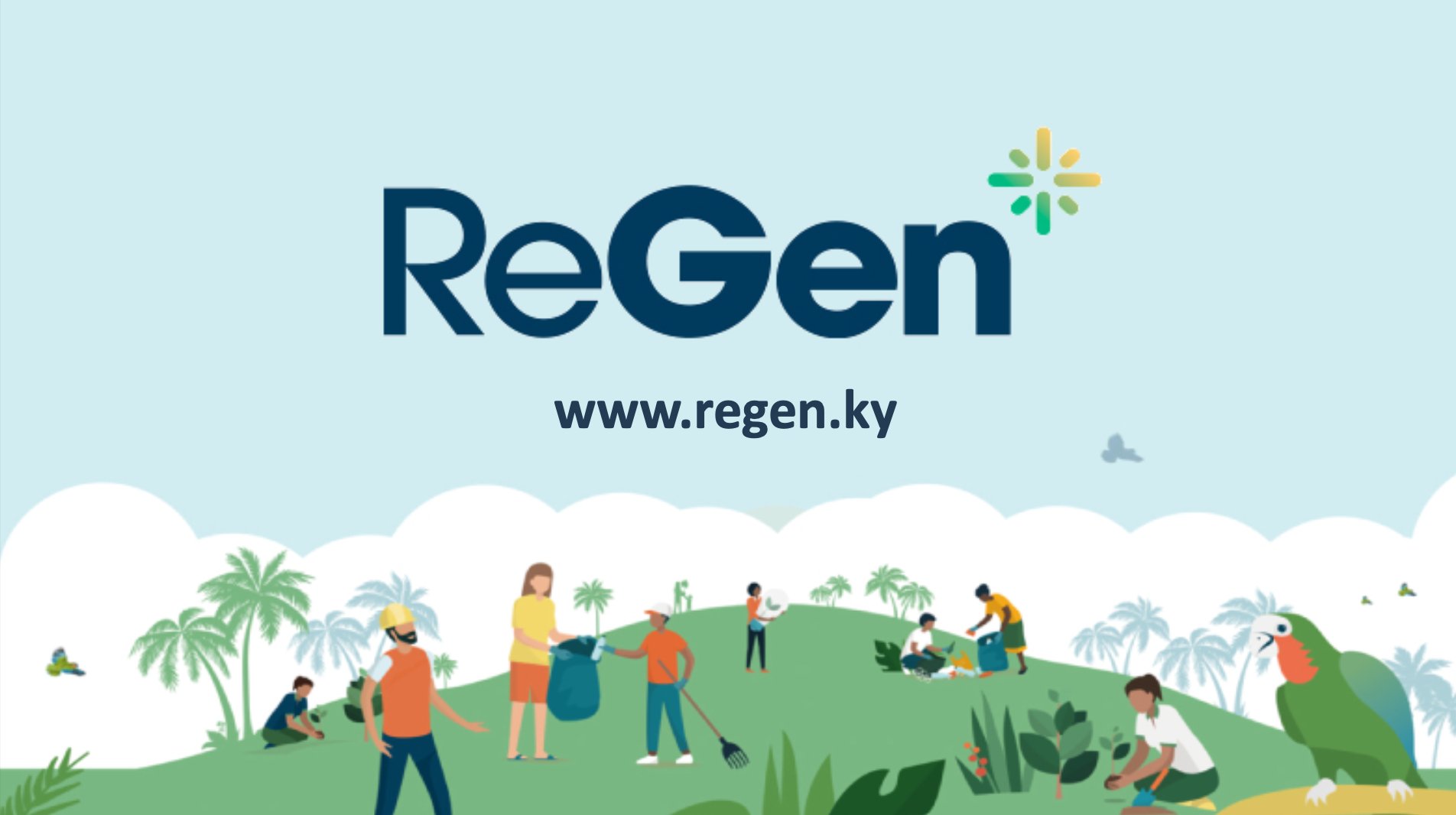







Thanks for listenening to my comment about the images – much appreciated!
Thank you for letting us know. Why they disappeared is a mystery.